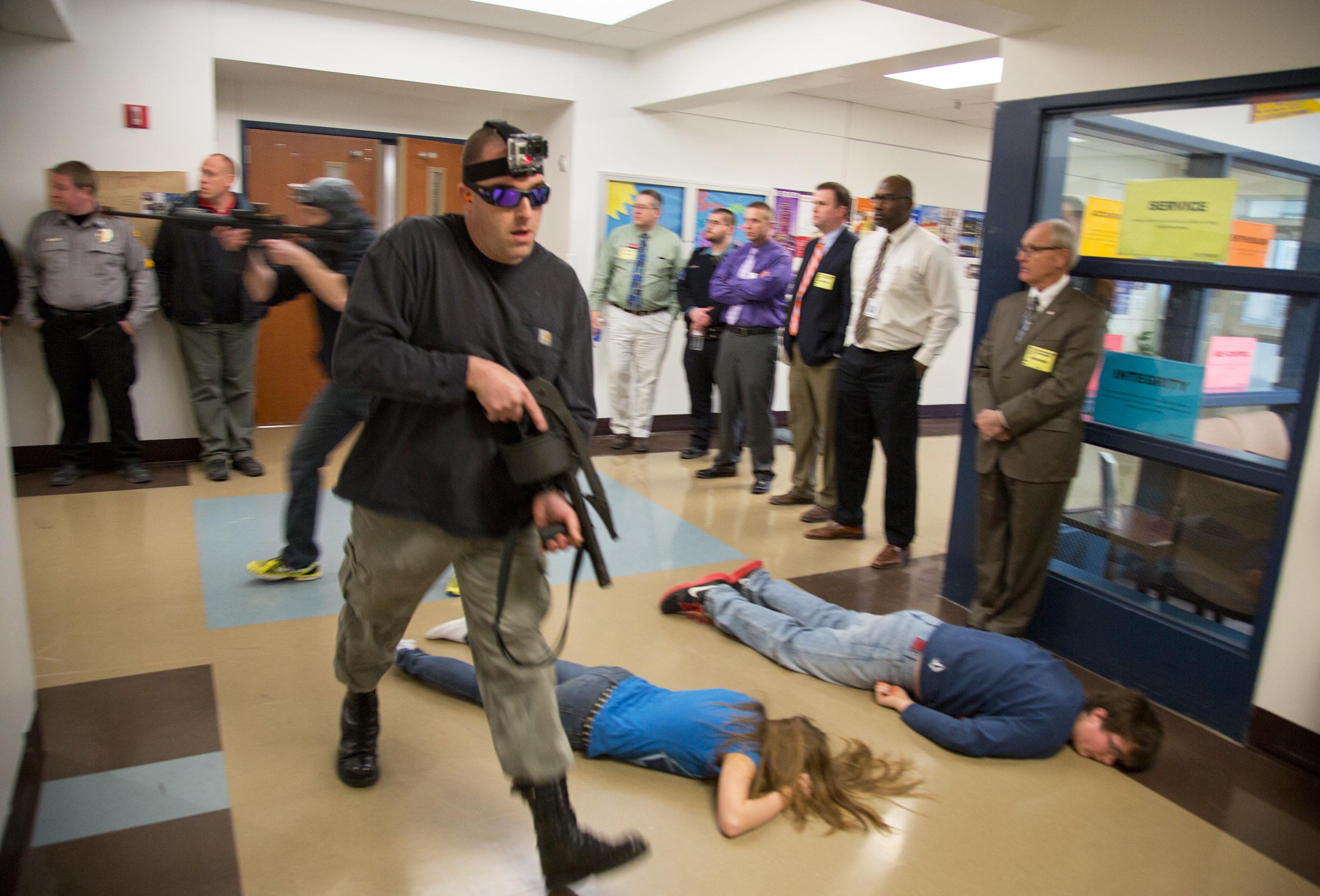
Unions demand end to graphic mock-ups that fuel fear among pupils as young as five
(March 1, 2020) — Shooter drills”, in which masked men carrying assault rifles burst into classrooms and simulate real-life gun attacks, are traumatising children and should be banned, America’s two biggest teachers’ unions have warned.
The drills came in after the Columbine shooting in 1999, where 13 students were killed, but they have surged in American schools since the attack at Sandy Hook school in 2012, when a gunman shot dead 26, mostly children in kindergarten.
“You have kids wetting their pants, you have kids crying, you have teachers crying and you have everyone saying, ‘this is it — I’m going to die’,” said Lily Eskelsen García, president of the National Education Association. “And when it’s over, it’s like — just kidding!”
Talking to children about where to hide in the event of an intruder is one thing, but the graphic nature of the mock-ups is putting children and teachers in “the most frightening situations”, Eskelsen García said.
Teachers are shot at with pellet guns and children as young as five are made to cower silently under desks, while others are asked to lie down in hallways covered in fake blood.
For teacher Abbey Clements, a survivor of Sandy Hook, putting children through terrifying “active shooter” situations — and making them think they are real — is “obscene and perverse”.
“How can you possibly plan for all the different horrific ways people can carry out these mass shootings?” There are common sense things that we can do, she said, “but to make children and teachers go through these potentially harmful drills in the name of safety is just ludicrous”.
Now, the NET has joined forces with the American Federation of Teachers and a leading gun-control advocacy group, Everytown for Gun Safety, to say enough is enough.
They are calling for an end to what they call “extreme shooter drills”, saying they leave children traumatised, unable to focus in class, and unable even to sleep at night. In some cases, teachers have been physically wounded, said Eskelsen García.
Today, 95% of schools are practising shooter and lockdown drills in one form or another. Some states, such as Florida, have passed laws making them mandatory.
In their wake, says Eskelsen García, a $2.7 billion industry has grown up as private companies swoop in to offer their safety training services. “Hire us and we’ll organise safety for your school, they say — but they’re preying on the anguish of parents and school staff and the desperate feeling that we must ‘do something’,” she said.
But Jean-Paul Guilbault, chief executive of the Alice Training Institute, a company that runs shooter drills, insisted they don’t fuel fear. “Our children are living in it, they see it all around them on the news, they go to school every day and they are worried about it,” he said.
His company claims to have a methodology that could save people’s lives in “the two minutes 20 seconds from when a shot goes off to when the first responders arrive”.
Drills did need to be age-appropriate, he said. “But when that alarm goes off, when the panic button is pushed, people should know how to secure a room.”
Shannon Watts, founder of Moms Demand Action for Gun Sense in America (part of Everytown) believes active shooter drills are deflecting from the real issue in America, of easy access to guns. “Whenever there’s a mass shooting, the gun lobby argues that schools need to be arming teachers and increasing the number of shooter drills,” she said. “But children are much safer in schools than they are in their homes.”
Almost five million American children live in homes with unlocked, loaded guns. The focus needs to be on addressing gun violence “before it ever gets to our schools”, she said.
Clements understands that parents are afraid for their children whenever the unthinkable happens — whether it’s at a school, a cinema or, a shopping mall. “It’s a difficult situation for the schools,” she said, “because parents are demanding to know ‘what are you doing to keep my kids safe?’.”
But she is adamant that no one could have done anything differently at Sandy Hook. “In a real situation, you have no idea where the shooting is coming from”, she said. “There’s no right or wrong thing to do — you go on instinct.”
Posted in accordance with Title 17, Section 107, US Code, for noncommercial, educational purposes